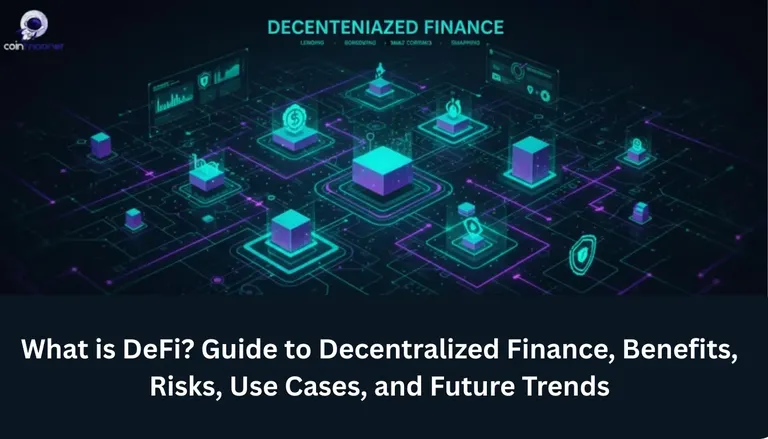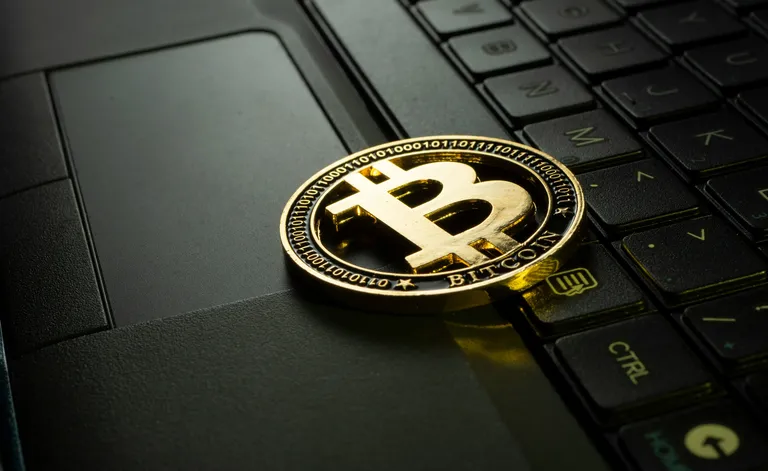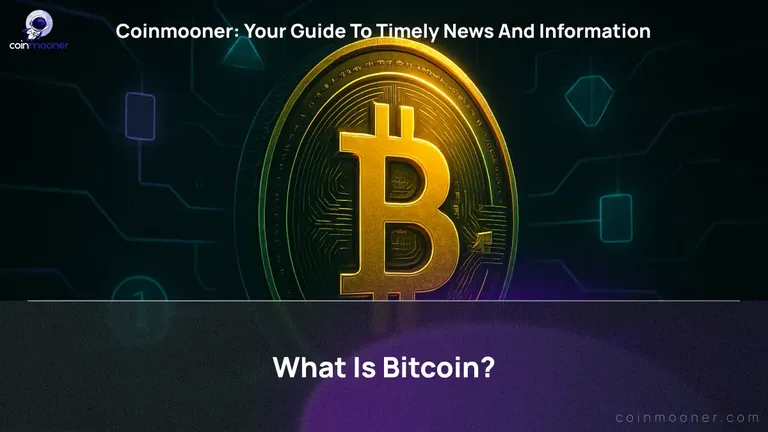DeFi vs Traditional Finance: What Is the Future?

Decentralized finance (DeFi) is a rapidly developing industry. Find out who is going to win the “DeFi vs traditional finance” battle in the future.
What Are the Main Goals of DeFi and Traditional Financial Systems?
Both decentralized and traditional finances are involved in the fund movement associated with various financial transactions. Those can be borrowing and lending funds, providing liquidity, and others.
Banking institutions play a crucial role in the traditional system. They are the holders of the funds further distributed to those entities who need them for various purposes. In essence, this system aims at providing the necessary fund supply.
DeFi aims at ensuring the seamless flow of financial transactions, and it is more efficient compared to the traditional system. There are no third parties involved, so users can interact with each other on a peer-to-peer basis.

Compared to traditional finance, DeFi allows reaching a set of other goals, such as:
· quicker speed of any transaction;
· availability of funds for every participant (no credit check is involved);
· easy access from any place in the world without setting up a bank account.
What Is Decentralized Finance?
Decentralized Finance is an unregulated financial sector. It is based on the public blockchain, allowing for greater efficiencies compared with the traditional financial system.
Before digging deeper into the “traditional finance vs decentralized finance” comparison, let’s get a clear understanding of what decentralized finance is.
Features of Work
DeFi aims at eliminating a range of issues associated with the existing financial sector. In particular, it makes financial services more affordable since no fees are paid to intermediaries. Generally, the exclusion of third parties allows taking advantage of a wide range of benefits, such as the absence of a standard for the traditional financial system paperwork.
The main features of this system are:
· Accessibility. Everyone can access DeFi markets. All that users need are access to the Internet and a crypto wallet. Such an opportunity is not provided for users of the traditional financial system. They have to deal with intermediaries and undergo various standard procedures, such as application submission.
· Programmability. Smart contracts are used in DeFi to make various deals. It is possible to create any code to execute a deal. Also, it gives lots of freedom to developers in creating new financial products.
· Transparency. All the deals are publicly available. This means that everyone can check out its conditions without having an opportunity to alter its terms.
· Full control. Users do not need to use the services of third-party financial institutions. This means that they keep control over their funds and personal details. Customers are people to decide when and how to spend their funds.
· Anonymity. The personal data of users are not revealed because all the transactions are conducted with the use of a pseudonym.
· Availability. The marketplace is available around-the-clock. There are no working hours or holidays. Customers can access the services of this financial sector at any time convenient for them.
Examples
There are plenty of different examples of how this sector works. Here are the most significant ones:
· The absence of banking services. There are no intermediaries, such as banks, which means that users face no boundaries when interacting with each other. Lenders deposit their funds in a liquidity pool, depending on the condition of a smart contract, and then they get their rewards automatically.
· Avoiding global financial issues. A financial crisis may be devastating for the existing banking system. One of them happened in 2008 when lots of people lost plenty of their money and many banks went bankrupt. Since no not third party holds funds on a blockchain, such a crisis is not a peril. However, certain risks do exist in DeFi.
· The absence of restrictions. People do not need to bother about any limitations. In essence, there are no traditional boundaries. Users can access funds without any credit check; they do not need to have a bank account and perform other actions relevant to the existing banking system.
· Financial creativity. DeFi allows for the creation of financial products that used to only belong to licensed institutions. Futures, swaps, and other financial derivatives are not something exceptional for the crypto world. Developers come up with an idea, write code, and publish an app.
· Effective DeFi apps. Those are codes developed with certain purposes. They allow for automated work, depending on the type of agreement.
Further technology advancement plays a vital role in the development of DeFi. So, the DeFi vs traditional finance battle is going to be more intense.
What Is Traditional Finance?
Traditional finance is mainly about money lending through financial institutions, such as banks. Everyone is pretty much familiar with this type of market. However, it is important to have a deep knowledge of it to understand the difference between DeFi and traditional finances.
Features of Work
It is a highly developed industry where both individuals and businesses are looking for additional funds to cover their needs. For example, when a person gets a loan at a bank, it is considered traditional finance.
The following are the main features of Traditional Finance:
· The funds of customers are in the possession of companies.
· The customers trust the companies with their money, hoping that their funds will not be used for illegal purposes or given to unreliable borrowers.
· Transactions may take up to several days since they often involve manual procedures.
· Personal data is revealed to financial institutions.
· Using financial services requires some paperwork.
· Markets are not available around-the-clock because the employees need to have days off and holidays.
· Financial institutions keep each transaction close for public view.
Lots of hassle and other issues make the crypto world look better, when it comes to DeFi vs traditional finance.
Examples
Any financial service related to borrowing and lending funds with the help of a financial institution is provided within the traditional finance scope. For example, if a person applies for a loan at a bank or through an online service provider, one becomes a participant of the traditional financial sector.
DeFi Vs Traditional Finance: What Is the Difference?
There are numerous differences between traditional finance and DeFi, such as speed, cost, access, and others. Knowing them will help better understand the specifics of the “DeFi vs. traditional finance” challenge.

Let’s have a look at the key aspects of the decentralized finance vs. traditional finance comparison to understand which system is more efficient. The main differences between those two types of finances are as follows:
· In DeFi, all operations are conducted in a publicly available blockchain. So, it is the main trust source. As for traditional finances, they are regulated by a set of laws and licensed financial institutions.
· There are no boundaries that users of DeFi need to overcome. They need to do a few simple actions to enter the DeFi world, such as setting up an e-wallet, finding a reliable platform, choosing a project, and adding their funds. However, all this is completed much faster compared with the traditional finance system.
· Quick implementation of new products. Existing technologies allow for the creation of various financial products and their instant implementation. Such procedures take much more time and effort within the traditional financial system.
Which System Has the Greatest Potential
DeFi attracts more and more users. They understand the significant benefits of this system and often prefer it to the old-school means.

It is no wonder that rapid growth is typical for DeFi, while it is not leading in the DeFi vs traditional finance battle.
Decentralized finance is a decent alternative to traditional finance even despite certain imperfections. People enjoy the opportunity to get rid of the inconveniences of the conservative system, such as providing personal data, undergoing credit checks, waiting for days to complete a transaction, paying hefty fees, and others.
DeFi is less vulnerable than the traditional financial system that often undergoes crises. People get full control over their finances, and they do not have to reveal any personal details.
Since open-source code is available for developers, they can experiment with various financial tools, offering more attractive instruments to the market. They can work around the clock without restrictions, developing new and upgrading existing applications.
How Decentralized and Traditional Finance Interact with Each Other
Both DeFi and traditional finance are sectors designed for lending and borrowing money, as well as other financial transactions. The users of both systems can be the same people. Both DeFi and traditional finance cross with each other at some point.
How Can They Interact?
Various financial transactions occur on DeFi platforms independently from the traditional financial system. All the operations are conducted in the cryptocurrency market. However, DeFi is not the finance system that can fully replace the traditional one. This means that they interact at some point. In particular, before lenders can offer their funds through DeFi platforms, they need to convert the fiat money into crypto coins or tokens. Usually, the money is stored in a bank account, from where it is transferred to e-wallets.
There is no direct interaction between lenders and borrowers from different financial systems. In DeFi, both lenders and borrowers are the users of a smart contract. When it comes to traditional finances, the parties use the services of the same intermediaries, such as banks, online service providers, and others.
Conclusion
Traditional finance remains the backbone of the economy. Lots of people still opt for a usual way to lend and borrow money. However, the number of DeFi users increases rapidly. Considering a large number of this system’s benefits, it has all the chances to replace the traditional financial system in the future.
The main benefits of DeFi include the lack of regulations, ease of access, quick transactions, anonymity, and an opportunity to design new financial instruments. People using this system can avoid all the complications typical of the traditional financial system. Everyone can become a user of DeFi at any moment.
Although this system has certain imperfections that do not allow it to fully replace traditional finance, users should not avoid opportunities to learn more about DeFi and its benefits. It is very convenient to use for borrowing some funds, especially for people who have problems with using traditional finances due to a low credit score or other issues. Those looking for a steady passive income can also find DeFi quite convenient and efficient.
Frequently Asked Questions
What Are the Main Goals of DeFi and Traditional Finance?
The main goals of DeFi are to speed up transactions and increase access to financial services. As for traditional finance, the primary goal is to provide investors with the opportunity to earn money and supply borrowers with funds whenever they need them.
DeFi Vs. Traditional Finance: What Is the Difference?
There is a range of differences between those two types of finances. The first one allows everyone to access various financial services without involving any third party. It is based on smart contracts.
Decentralized Finance Vs. Traditional Finance: Which System Is the Future?
Decentralized finance has already drawn lots of attention from participants of the traditional market, so it has all the chances to become the system of the future.










